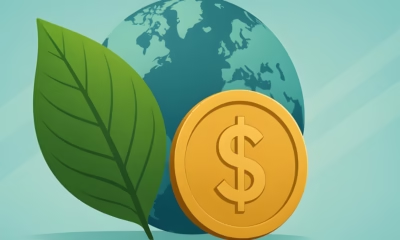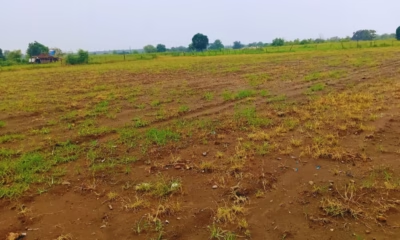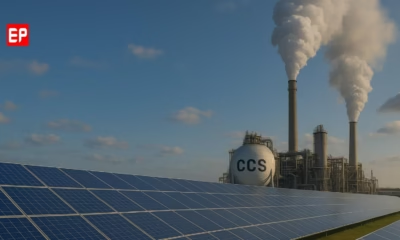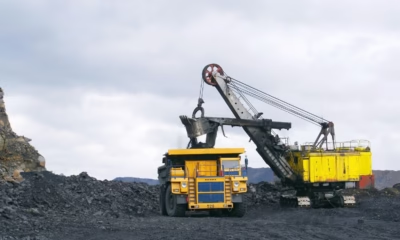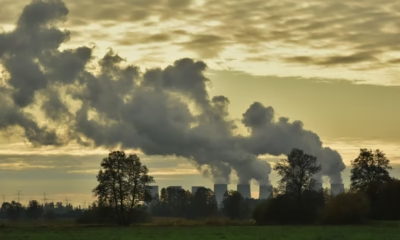COP30
Earth Nears Dangerous Tipping Points Amid Rapid Warming, Urgent Action Needed at COP30
The Global Tipping Points Report 2025 warns of imminent climate tipping risks at 1.5°C warming, urging urgent global action at COP30 to prevent irreversible impacts and accelerate sustainable transitions.

As global warming edges perilously close to the 1.5°C threshold, a new scientific report warns that Earth’s vital ecosystems are approaching irreversible tipping points with catastrophic implications for billions of people worldwide. Released ahead of the COP30 climate summit in Belém, Brazil, the ‘Global Tipping Points Report 2025‘ issued by leading researchers from the University of Exeter and international partners reveals an urgent call for unprecedented global cooperation to prevent cascading system collapses.
“Already at 1.4°C of global warming, coral reefs face unprecedented dieback, while polar ice sheets threaten multi-metre sea level rise,” states the report. “The Amazon rainforest risks widespread dieback below 2°C, jeopardizing biodiversity and the livelihoods of over 100 million people.” The report highlights the intertwining threats posed by climate change, deforestation, and feedback loops that amplify warming risks, including potential collapse of the Atlantic Ocean circulation that governs weather patterns across Europe and Africa.
Urgency is paramount. The report emphasizes that exceeding 1.5°C—even briefly—significantly increases the odds of triggering multiple tipping points with cascading effects that disrupt food security, water availability, and economic stability globally. Authors warn that waiting until tipping points are crossed before acting is a grave mistake; instead, immediate measures to halve global greenhouse gas emissions by 2030 and achieve net zero by 2050 are essential.
The report also highlights emerging positive tipping points fueled by rapid adoption of solar power, electric vehicles, and nature-positive initiatives as crucial leverage points for accelerating sustainable transformation. “Positive tipping points can cascade across sectors, driving exponential change,” the researchers note, urging coherent policy mandates, finance mobilization, and inclusive governance to unleash these potentials.
In a message from Brazil, host of COP30, the report’s foreword calls for shifting the narrative from fear to hope: “We must prevent irreversible harm but equally trigger positive tipping points that propel societies towards low-carbon and climate-resilient development.” This vision centers the Global South’s pioneering efforts in regenerative agriculture, forest restoration, and climate finance innovation.
Critical governance challenges remain as the report stresses the need for anticipatory, justice-centered, multi-scale approaches linking human rights with climate action. International cooperation, transparent monitoring, and empowering Indigenous peoples and local communities stand out as pillars to navigate this precarious climate crossroads.
COP30 represents a decisive moment. The report concludes, “The time to act is now. United, we can reverse dangerous climate trajectories and trigger a global wave of renewal. Let us change by choice, together.”
COP30
Bridging the Adaptation Finance Gap: India’s Case Before COP30
As COP30 approaches, India faces a widening adaptation finance gap, despite rising climate impacts and mounting economic losses
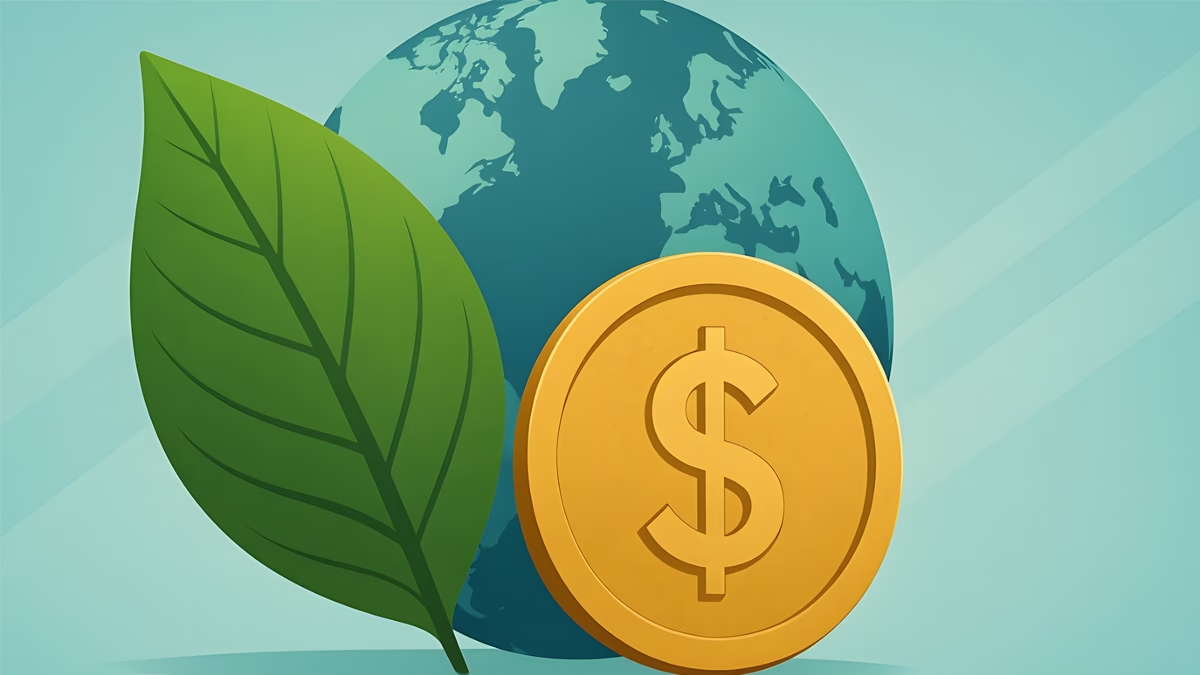
With COP30 in Brazil less than a month away, the world’s attention is turning to the elusive promise of adaptation finance — money meant not for cutting emissions, but for surviving their consequences. In New Delhi this week, a closed-door High-Level Roundtable on Adaptation Finance, organised by Climate Trends, brought together senior policymakers, economists, and global climate finance experts. The message that emerged was stark: India’s adaptation needs are vast, but the money isn’t flowing.
According to international estimates, while adaptation finance globally rose from USD 22 billion to USD 28 billion in 2022, developing countries require more than USD 350 billion annually to protect lives and livelihoods. India’s share of that unmet need remains enormous — and more than 60% of global adaptation finance still comes as loans, piling additional debt on already stressed economies.
“The geopolitics of the world is at an inflection point,” said Aarti Khosla, Director of Climate Trends. “Countries are wrestling with how to make the Global Goal on Adaptation practical and measurable. India is preparing to submit its first National Adaptation Plan. The quality of the finance also matters — because commitments made at multilateral fora are only as good as the systems that deliver them.”
The Growing Cost of Climate Impacts
India’s climate vulnerabilities are intensifying. Record-breaking heatwaves, erratic monsoons, floods, and agricultural losses have already dented GDP growth, with studies suggesting climate-linked economic damage could shave off 2–3% of India’s GDP by 2030. The country’s adaptation costs, as projected by several national and international assessments, could run into tens of billions annually.
Yet, domestic and international systems remain mismatched to that reality. “Adaptation needs to be built into a profitable market system that attracts private investment and creates entrepreneurial enterprise,” argued Abhishek Acharya, Director at the Ministry of Environment, Forest and Climate Change (MoEFCC). “We need a strong policy framework that enables even the last tier of governance — municipalities, panchayats — to access funding.”
The challenge, experts noted, isn’t just about the quantum of funds, but their design. India’s adaptation funding is fragmented across ministries and states, with little clarity on effectiveness. “We should be looking at adaptation-relevant expenditures,” said Amrita Goldar, Senior Fellow at the Indian Council for Research on International Economic Relations (ICRIER). “Looking through budgets at both central and state levels is a big task by itself. For adaptation, we don’t even have a sense of how technologies will evolve. When technologies are niche, private finance will not lead — public finance must.”
The Global Architecture and Local Realities
The Global Goal on Adaptation (GGA), first established under the Paris Agreement, remains largely conceptual — a vision still waiting for metrics. COP30 could change that, with countries expected to finalise indicators for tracking adaptation progress. Yet, experts warn that measurement alone won’t build resilience.
“If GGA indicators get finalised at COP30, they will become a yardstick for evaluation and performance,” said Pushp Bajaj, Programme Lead at Council on Energy, Environment and Water (CEEW). “But just measuring progress isn’t enough. The connections with real climate challenges must be explicit, and India should take a strong stand.”
For India, where agriculture, water, health, and heat stress are already colliding crises, effective adaptation requires reforming both global finance flows and domestic fiscal systems. Kathryn Miliken, Senior Climate Change Specialist at the Asian Development Bank (ADB), noted that adaptation finance forms only about 10% of total climate finance worldwide. “ADB is aiming for 30% of its portfolio to go toward adaptation,” she said. “But the larger challenge is mainstreaming adaptation into economic planning. It still hangs loosely as a standalone agenda.”
Governance Gaps and Subnational Needs
At the state and district levels, limited financial autonomy has hindered locally relevant adaptation measures. Arjun Dutt of CEEW observed, “Coastal embankments, water shelters — these are public goods. Local authorities are directly involved, but though we have devolution in the Constitution, financial powers have not been devolved.”
Experts argued that subnational access to climate finance — through mechanisms like resilience bonds, blended finance, and state adaptation funds — could be the next big step. “Adaptation is a local issue,” said Amir Bazaz, Head of Infrastructure and Climate at the Indian Institute for Human Settlements (IIHS). “We don’t have the capacity to develop projects that are locally embedded, and resources are insufficient. Investments are largely driven by returns, not resilience.”
The Politics of Adaptation
Beyond numbers, adaptation is deeply political. “We understand the global game of power evolving around energy,” said Ambassador Manjeev S. Puri, Distinguished Fellow at TERI. “It’s time for us to talk about adaptation in a louder manner — both locally and globally. Link adaptation to resilience, and you will find political buy-in.”
Ovais Sarmad, Vice Chair of the Greenhouse Gas Protocol, added a sobering global view: “We’re living in a world that’s moved from VUCA — volatile, uncertain, complex, ambiguous — to BANI — brittle, anxious, non-linear, incomprehensible. India must be actively engaged in discussions at the Standing Committee on Finance. Our position must be clear and people-centred.”
The Standing Committee on Finance (SCF), part of the UNFCCC structure, plays a key role in shaping how climate funds are allocated and monitored — including reforms in Multilateral Development Banks (MDBs). Several participants at the roundtable called for MDBs to increase concessional finance and reduce the loan-heavy structure of current adaptation flows.
Data, Delivery, and Diplomacy
For experts like Purnamita Dasgupta, Head of the Environmental and Resource Economics Unit at the Institute for Economic Growth, the way forward lies in clarity and pragmatism. “We want a lot of things, but we need to split this conversation into high-level messages and those we keep within our borders,” she said. “There’s no case for being overwhelmed. Development is the only solution. We should not wait for a magic number, nor ignore it.”
The final consensus from the roundtable was clear: India’s leadership on adaptation finance will depend on how well it aligns data, policy, and diplomacy. As the country prepares to submit its first National Adaptation Plan (NAP) to the UNFCCC, its approach could influence not just negotiations at COP30, but also how the Global South reframes adaptation as a cornerstone of economic growth.
“Adaptation is no longer a technical footnote to mitigation,” Khosla concluded. “It’s about protecting people, ensuring justice, and redesigning the financial systems that decide who gets to survive the climate crisis — and how.”
-

 Space & Physics5 months ago
Space & Physics5 months agoIs Time Travel Possible? Exploring the Science Behind the Concept
-

 Earth6 months ago
Earth6 months ago122 Forests, 3.2 Million Trees: How One Man Built the World’s Largest Miyawaki Forest
-

 Space & Physics6 months ago
Space & Physics6 months agoDid JWST detect “signs of life” in an alien planet?
-

 Know The Scientist5 months ago
Know The Scientist5 months agoNarlikar – the rare Indian scientist who penned short stories
-

 Society4 months ago
Society4 months agoShukla is now India’s first astronaut in decades to visit outer space
-

 Society4 months ago
Society4 months agoAxiom-4 will see an Indian astronaut depart for outer space after 41 years
-

 Earth4 months ago
Earth4 months agoWorld Environment Day 2025: “Beating plastic pollution”
-

 Society6 months ago
Society6 months agoRabies, Bites, and Policy Gaps: One Woman’s Humane Fight for Kerala’s Stray Dogs

